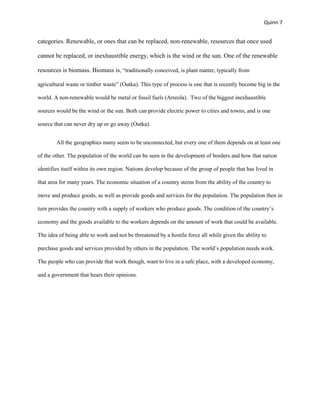The document discusses several key topics in geography including population geography, political geography, and economic geography. It explains that population geography studies the distribution and movement of human populations, as well as factors like carrying capacity. Political geography examines governmental systems, levels of government, and how territorial shape and size impact nations. Economic geography analyzes different economic systems, levels of economic activity, and how natural resources factor into a nation's economy. The document argues that while these geographies study different aspects, they are all interconnected, with factors like population influencing a nation's wealth and economy.






